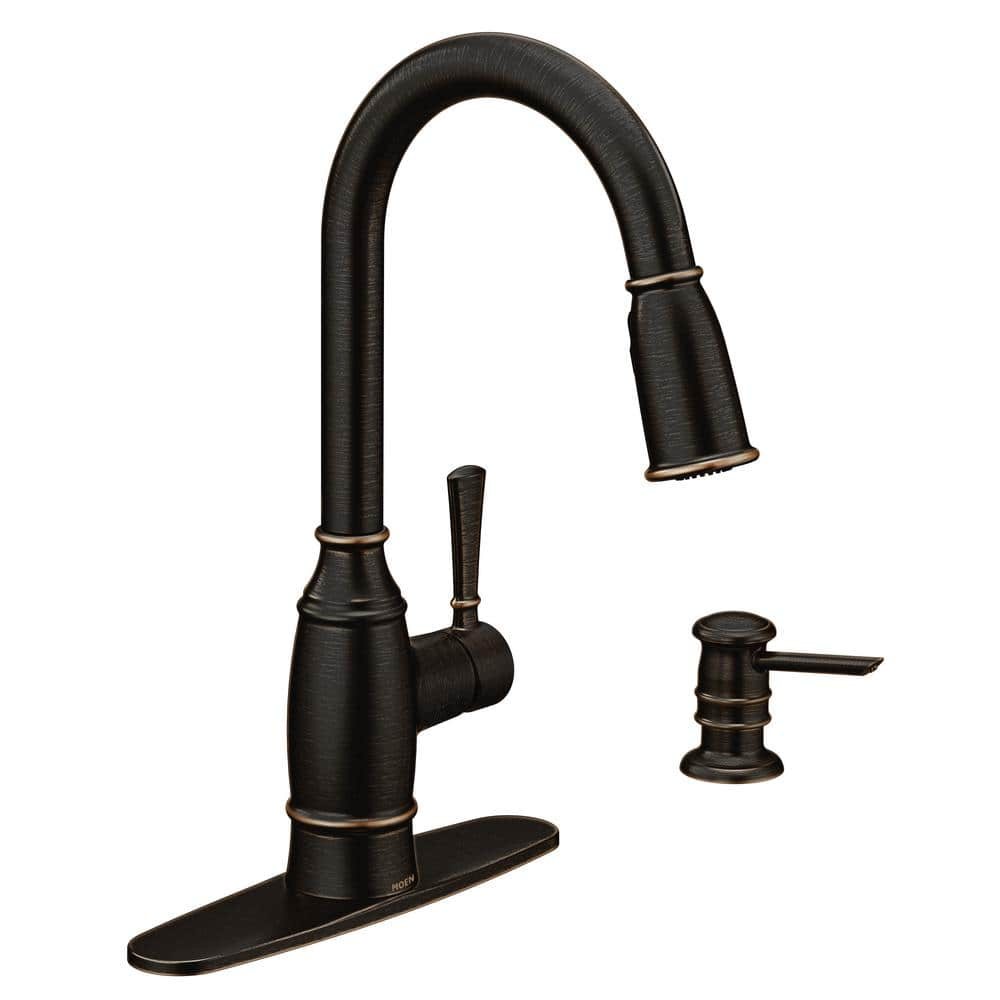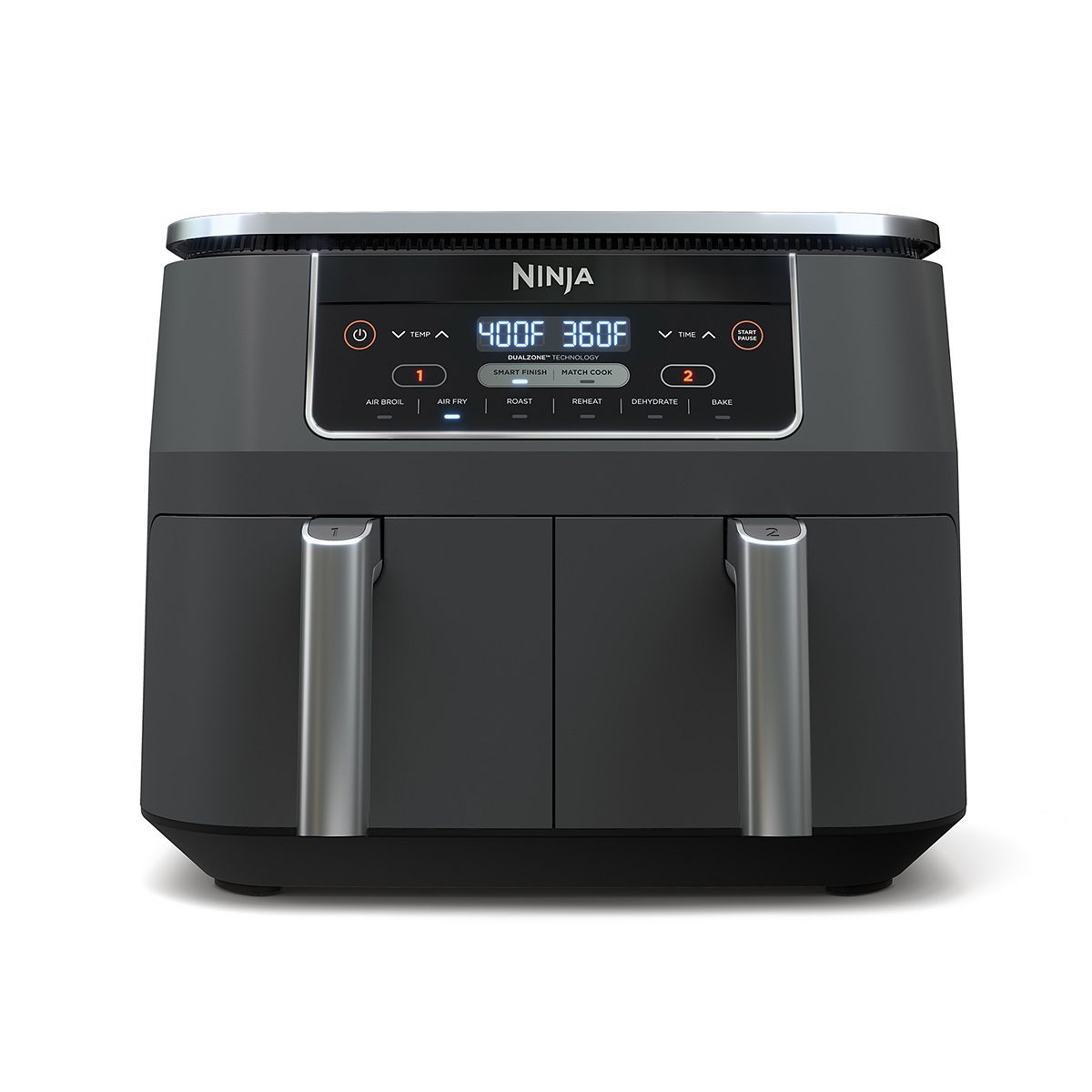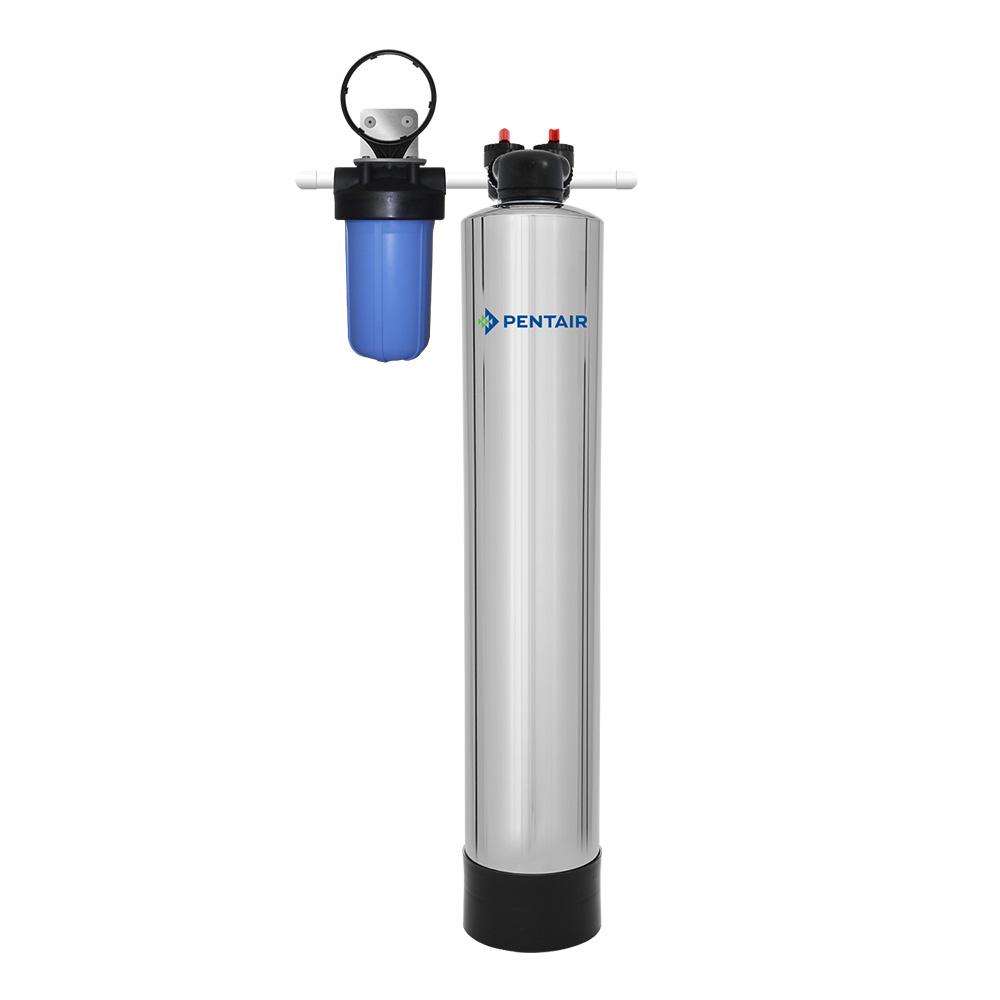MOEN Noell Single-Handle Pull-Down Sprayer Kitchen Faucet with Reflex, Soap Dispenser and Power Clean in Mediterranean Bronze
Pull-down spray for easy rinsing and incredible spray power. Coordinating soap dispenser eliminates unsightly bottles. Designed for easy installation.
The MOEN Noell 1-Handle Pull-Down Sprayer Kitchen Faucet was designed with attention to detail. The Noell collection embodies elaborate traditional designs to enhance the style and design of any home. This faucet has a convenient pull-down sprayer and swivel spout that enables you to reach every corner of your sink. Reflex system for smooth operation.
- Power Clean spray technology provides 50% more spray power versus most MOEN pulldown and pullout faucets without the Power Clean technology
- Equipped with the reflex system for smooth operation, easy movement and secure docking of the pulldown/pullout spray head
- Features Duralock quick connect system for easy installation
- Soap/lotion dispenser included for fully coordinated convenience
- Pulldown design offers at your finger tips water delivery
- Aerated stream for everyday cleaning; powerful rinse for heavy-duty cleaning
- Faucet can be installed with or without included deck plate (escutcheon)
Additional information
| Connection size (in.) | 1/2 In. |
|---|---|
| Extended Hose Length (in.) | 68 |
| Faucet Height (in.) | 15.25 |
| Spout Height (in.) | 15.57 |
| Certifications and Listings | ADA Compliant, CSA Certified, NSF Certified |
| Manufacturer Warranty | Limited Lifetime Warranty |






by Mike
It is beautiful and was pretty easy for my 79yr old hubby to install. Love the way it works. My previous one looked similar but this works better.
by Bid
Fine product. Git one in the Bathroom also. Excellent.
by Nikki
Exactly what I was looking for. Style and color. Easy to install.
by Victoria
I upgraded to the Moen single-hand faucet, and what a difference it made to the look of my kitchen.